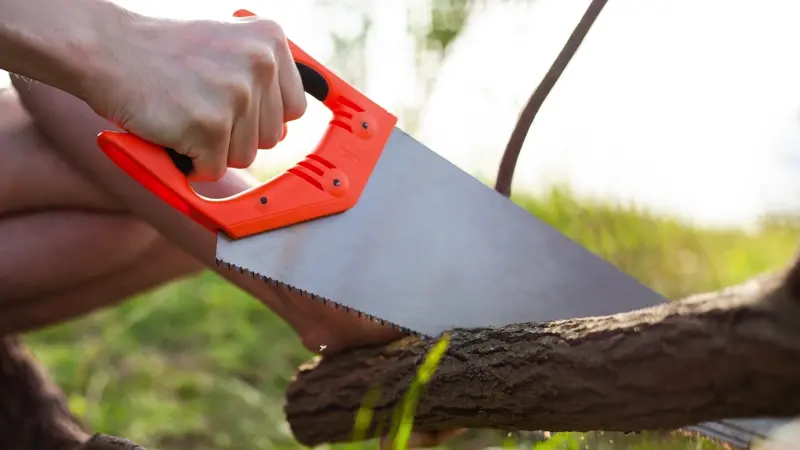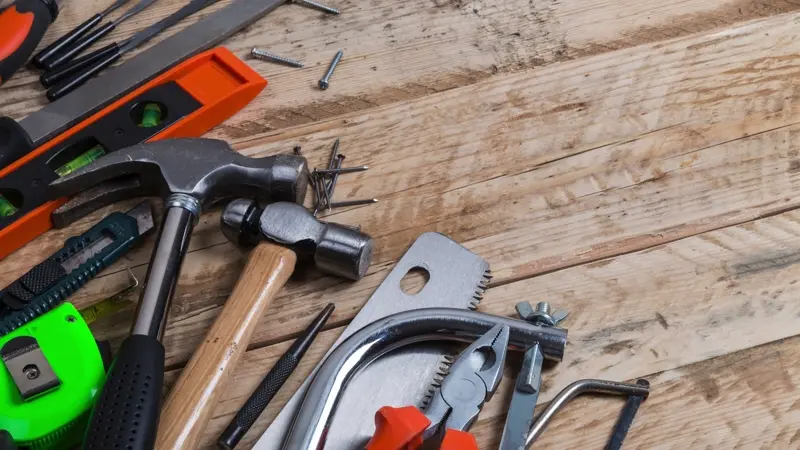Power saws are undoubtedly useful for their speed and efficiency in many projects, but there are situations where they may not be the most practical or secure option. In such instances, hand saws can be the ideal solution. They are more portable and lighter, making them suitable for work in challenging locations. Hand saws also offer enhanced control and precision that is necessary for certain delicate tasks. Moreover, they tend to be safer to use since they allow the user to direct the blade with greater command, an advantage sometimes lost when using power tools.
Table of Contents
Even with today’s construction industry leaning on high-powered mechanical and electric saws, hand saws continue to hold their own as a must-have for toolboxes everywhere. DIY enthusiasts, handymen, and carpenters all find a use for this ever-versatile tool.
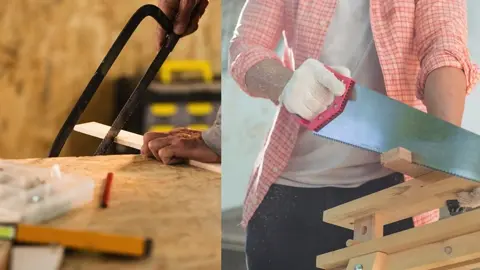
What are Hand Saws?
A reliable way to cut materials by hand, they’ve proven their worth time and time again. Consisting of a handle, blade, and teeth (or set) along the blade’s front edge, their sharp teeth paired with comfy handles make them a go-to choice for all sorts of tasks. You can find these trusty tools in lengths from 6-8 inches or longer. Designed with a spine that holds a series of tiny teeth and allows you to apply pressure for slicing into wood or other materials simply.
Types of Hand Saws
Hand saws come in all shapes and sizes to suit different purposes. Some are tailored for cutting softer materials while others can stand up to more heavy-duty work. Popular types include bow saws, hacksaws, coping saws, and pruning saws.
Your traditional wood-cutting hand saw typically sports sharp teeth along one side of its blade and comes in varying lengths suited to particular jobs. Teeth provide excellent wood cutting capabilities—cutting through even thick lumber with ease. Crosscut saws and backsaws are popular options for cutting across the grain of boards.
Keep in mind that hand saw terminology isn’t always consistent across suppliers, manufacturers, and users, which can make choosing the best tool for the job a little confusing. Terms like rip saws, crosscut saws, and circular saws might pop up frequently when on the hunt for your perfect hand saw.
Here’s a breakdown of four broad categories based on typical hand saw uses:
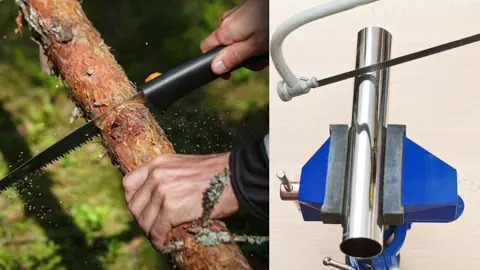
1. Traditional Wood Hand Saws
Traditional wood hand saws are enduring symbols of craftsmanship and construction. Their classic designs are carefully tailored for a variety of specific woodcutting tasks, with each saw’s unique shape and size designed to maximize performance for its intended purpose. Whether it’s for delicate scroll work, which requires a smaller, thinner blade for high-precision cuts, or for heavy-duty logging that needs a large saw with aggressive teeth for quick, effective cutting, wood hand saws are purpose-built tools. The feel of a well-crafted wooden handle and the rhythmic glide of the saw through wood continue to connect craftspeople to age-old woodworking traditions.
High-quality materials and precision in manufacturing are essential for making a saw that cuts with both accuracy and ease. Despite their seeming simplicity, wood hand saws demand proper technique and respect; incorrect use can compromise not only the workpiece but also the safety of the woodworker.
2. Metal Cutting Hand Saws
Metal cutting hand saws are specialized for precise, effortless slicing through various metals. These durable tools boast a blade—often made of high carbon steel or bi-metal composites—designed to maintain sharpness even when cutting hard surfaces. The serrated edge features fine teeth that are optimally sized and spaced, maximizing efficiency while minimizing both effort and material waste. Ergonomic handles provide comfort and control, ensuring accuracy during extensive or complex tasks. Essential for detailed work in jewelry making, plumbing, or HVAC installations, metal cutting hand saws allow both professionals and hobbyists to achieve precise cuts across a spectrum of metal types, from thin sheets to thick pipes. They are a vital addition to workshops and job sites around the globe.
3. Plasterboard Saw
The right tools are critical for a successful drywall or plasterboard installation. Chief among these is the plasterboard saw, an indispensable tool designed for precise cuts through fragile plasterboard. Its serrated blade is crafted to deliver sharp, neat cuts that maintain the plasterboard’s integrity—often a tricky task. Thanks to its pointed tip, the saw permits the user to begin cutting at any spot on the board, offering unmatched flexibility and convenience. This feature is particularly useful for tasks like carving out openings for outlets or customizing panel shapes to meet specific dimensions.
4. Gardening Saws
Gardening saws are essential for any devoted gardener, offering a range of options for various tasks. From pruning delicate flowers to cutting thick branches, each saw is tailored for specific types of wood. Folding saws boast portability and safety, while bow saws provide the strength needed for larger projects. Crafted from top-quality steel, these saws ensure durable and precise cuts that prevent disease and promote plant health. Additionally, their ergonomic handles deliver comfort and lessen fatigue, which is crucial for nurturing a beautiful and thriving garden.
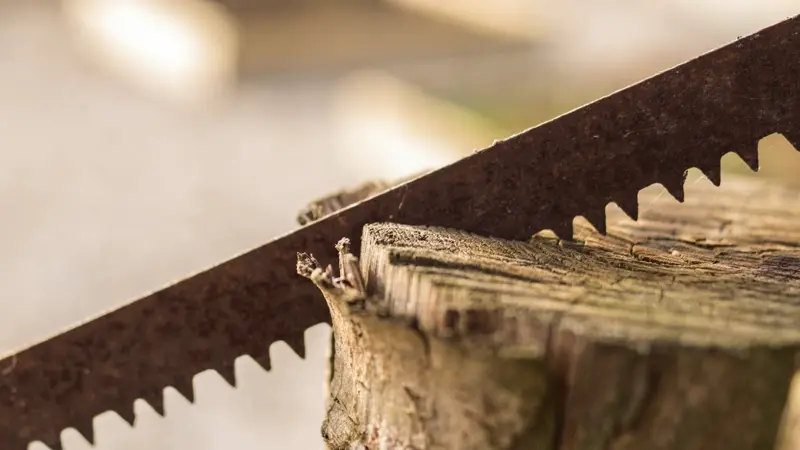
The Bottom Line
The versatility, precision, and control offered by hand saws make them an irreplaceable tool in various industries, despite advancements in power tools. Hand saws continue to prove their worth by serving as efficient alternatives in situations where power tools aren’t practical or pose safety risks. The next time you’re tackling a woodworking project or handling an unexpected gardening issue, consider reaching for a hand saw – you won’t be disappointed!
